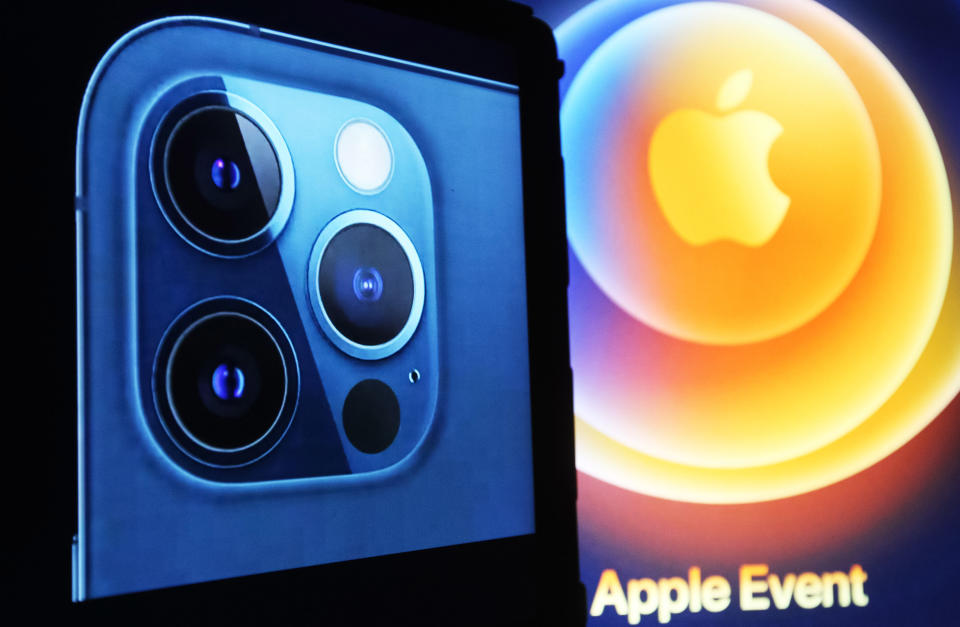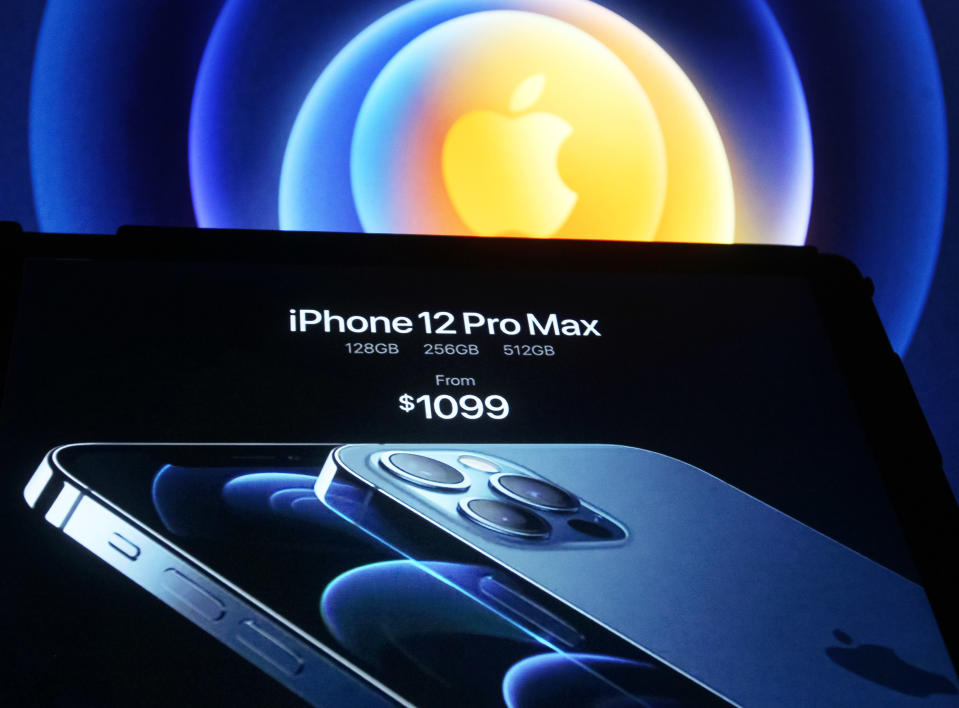If 5G doesn’t sell iPhones, the camera still might
A tried-and-true way to sell people on upgrading their phone is the promise of improved battery life.
The next way is almost as effective: Telling potential customers that their old phone — which was state-of-the-art last year — is now not good.
This has been the standard operating procedure for Apple (AAPL), which launched a new round of iPhones this week, led by the 5G-capable iPhone 12.
Let’s look at the past four iPhones and how they were marketed:
In 2016, Apple unveiled the iPhone 7 with "breakthrough new camera systems," with "completely redesigned cameras" like a "larger ƒ/1.8 aperture." It also had "the best battery life ever."
In 2017, Apple introduced the iPhone X, which had "reinvented front and back cameras" that were "redesigned" and complemented by "a new color filter, deeper pixels and an improved Apple-designed image signal processor" that "delivers advanced pixel processing, wide color capture, faster autofocus in low light and better HDR photos."
In 2018, Apple announced "most advanced iPhone ever" – the iPhone Xs iPhone Xs Max – with "breakthrough 12MP dual camera system" that brings "innovations to photography, things not possible before iPhone." The company called them "huge improvements in state-of-the-art photographic techniques."
In 2019, Apple announced the iPhone 11 with "an all new dual-camera system" with "major advancements in photography," like "Night mode," which delivers "huge improvements to photos captured in indoor and outdoor low-light environments." (It also naturally has an "even longer all-day battery life.")

Though these phones had some new features and innovations that occasionally led the marketing push, the largely incremental camera improvements remained at the forefront. Every year saw the energetic language of “breakthroughs,” “reinvented” and “redesigned” cameras, “innovations,” and “huge improvements.” Anyone with the previous iPhone that was state-of-the-art just 12 months ago had an outdated device.
(This is not how the rest of the camera world works; pros shoot with gear that’s over five years old on a regular basis, though Apple’s job may be largely figuring out how to cram more and more existing tech into a tiny space.)
The new ‘old’ way to sell a phone: a ‘pro’ camera
This is clearly a good way to sell phones. Apple has sold millions of iPhones — at the pace of around 11 million per quarter. When Apple has a new feature beyond an incremental camera improvement, the company often leans on that, like facial recognition to unlock the screen.
This year, with the help of Verizon (VZ), which owns Yahoo Finance, the iPhone 12 will have 5G, the next standard in mobile wireless connectivity that the companies promise will be game-changing (literally, by demonstrating game play for a game called “League of Legends”).
But 5G is young and the technology represents future potential, not a solution to a problem. 4G LTE is fast enough for most consumers’ current needs, so the vague promise of 5G might not sell phones that well.

Fortunately for Apple, the new iPhones have a better camera and the new “pro” iPhones —12 Pro and Pro Max — have a "pro camera system," which is "reimagined" with longer focal lengths and features that "capture beautiful professional-quality images."
To wit, Apple hired Emmanuel “El Chivo” Lubezki, the multi-Oscar winning cinematographer genius to underscore the point at its virtual presentation on Tuesday. Now you can shoot with something that’s good enough for El Chivo — your kids, your activities, and maybe you can get creative, now that you finally have a good camera.
This change in positioning toward a “pro” market might unlock a supercycle just as much as the nebulous 5G. If camera marketing was so successful before without relying on the same impulse that puts highly advanced National Geographic-quality DSLR and mirrorless cameras in the hands of regular enthusiast photographers, what happens when the biggest and most powerful tech company embraces it?
It will probably sell more phones. But maybe not. After all, the iPhone 8’s camera is great.
—
Ethan Wolff-Mann is a writer at Yahoo Finance focusing on consumer issues, personal finance, retail, airlines, and more. Follow him on Twitter @ewolffmann.
Government should collect wealth data just like income: Berkeley economists
Robinhood investors were a market-stabilization force during the pandemic crash
Why savings accounts have fallen — and some more than others
Intergenerational conflict is getting worse, Deutsche Bank warns
NYU professor: Make sure young investors 'don't become addicted' to online stock trading


